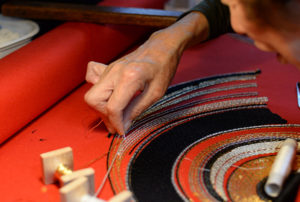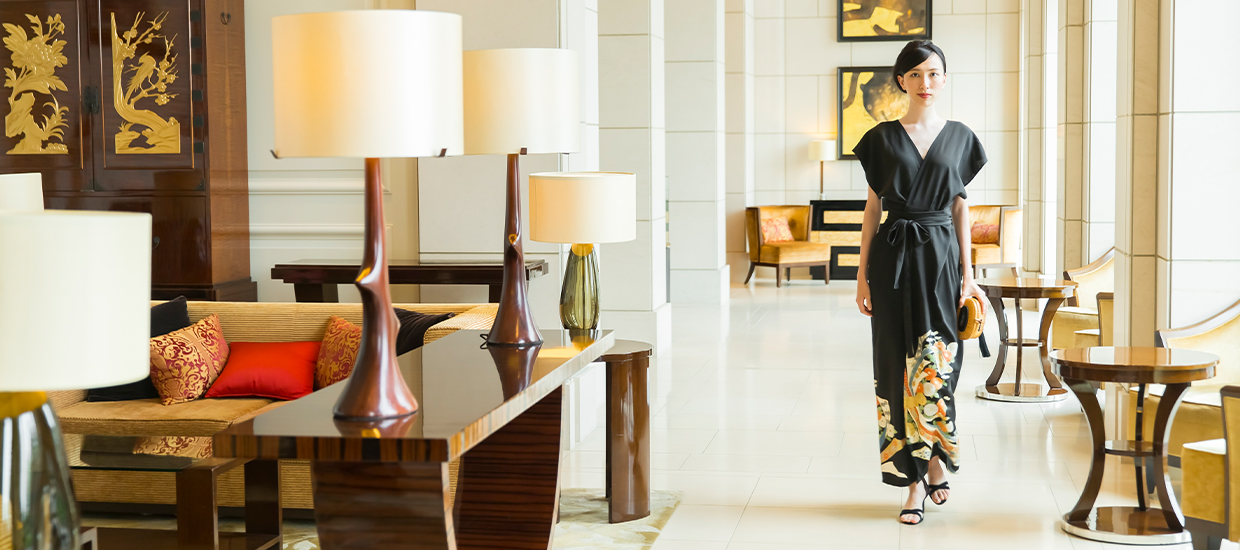The wonderfully preserved city of Kyoto is one of the best places in Japan to see expressions of the country’s traditional culture, from tea ceremonies to temples. One of the biggest draws to the ancient imperial capital is the opportunity to catch a glimpse of ornately dressed geiko (the local version of geishas) as they shuffle along the lantern-lit alleyways of the Gion district. Given the beauty of the silk gowns these entertainers wear, it’s little surprise that the city has long been famous for its textile craftsmanship, and today local designers are employing these classic fabrics in eye-catching modern styles.
One such designer is Joanne Laporte, a U.K. native who moved to Kyoto in 2011 and began collecting vintage obi and kimono fabrics from the Shōwa era (1926–89). In 2013, she launched Lakinoh, a line of colorful clutches made from thick obi fabric and lined with soft kimono material. Laporte sources the cloth from antiques markets, vintage stores, and auctions, and hand-stitches the bags herself. “Each clutch’s design, using the abstract motif of the obiperhaps a tortoise shell, flower, or birdwill be unique,” she says.

Balance and Harmony
Also reimagining Shōwa-era garb is Kien, an upcycle project that uses fabrics from tomesodes—kimonos worn by married women for formal occasions to make contemporary pieces such as a wrap dress and a drape-neck dress. According to founder Yoshie Kitagawa, the line (and, indeed, the very idea of upcycling) follows the classic Japanese approach to achieving balance and harmony with nature. “We aim to create more societal contentment through the joy of wearing sustainable items made with detail and care,” she says.
Even legacy brands are getting in on the act. Hosoo was founded in 1688 and is a legend for its pre-dyed Nishijin woven textiles, which it once supplied to imperial nobles and samurai. Today, under 12th-generation proprietor Masataka Hosoo, the company is looking to its heritage kimonos and obis for inspiration for modern goods such as luxury room shoes, curtains, and cushions.
Bespoke Tours
Want to dig deeper into the city’s charming streets and tucked-away ateliers? Book a bespoke tour with Curated Kyoto’s Sara Aiko, who can personally show you the most stylish shops and offer an insider’s perspective on contemporary Kyoto style. “Reimagining the kimono and obi is another way Kyoto creatives maintain harmony between the past and present, seamlessly blending ancient traditions with the city’s modern-day culture,” Aiko says. “It shows how locals take so much pride in their customs and are able to represent them in a very authentic and genuine way.”
Next Up: Meet Olga Polizzi, the designer who creates a sense of place
